In this post, we will give an overview of our hydroponic plant microbiome (microbial communities) project and catch you up on updates over the past few months. Read on to find out!
The Goal of Understanding the Hydroponic Plant Microbiome
With the growth of the world population, climate change, global crises, and access to affordable clean energy are challenges to long term food security. We need to have sustainable food systems in place to output fresh, safe, sufficient, and accessible foods on all scales, from local to global. Food security is a societal priority that we must focus on.
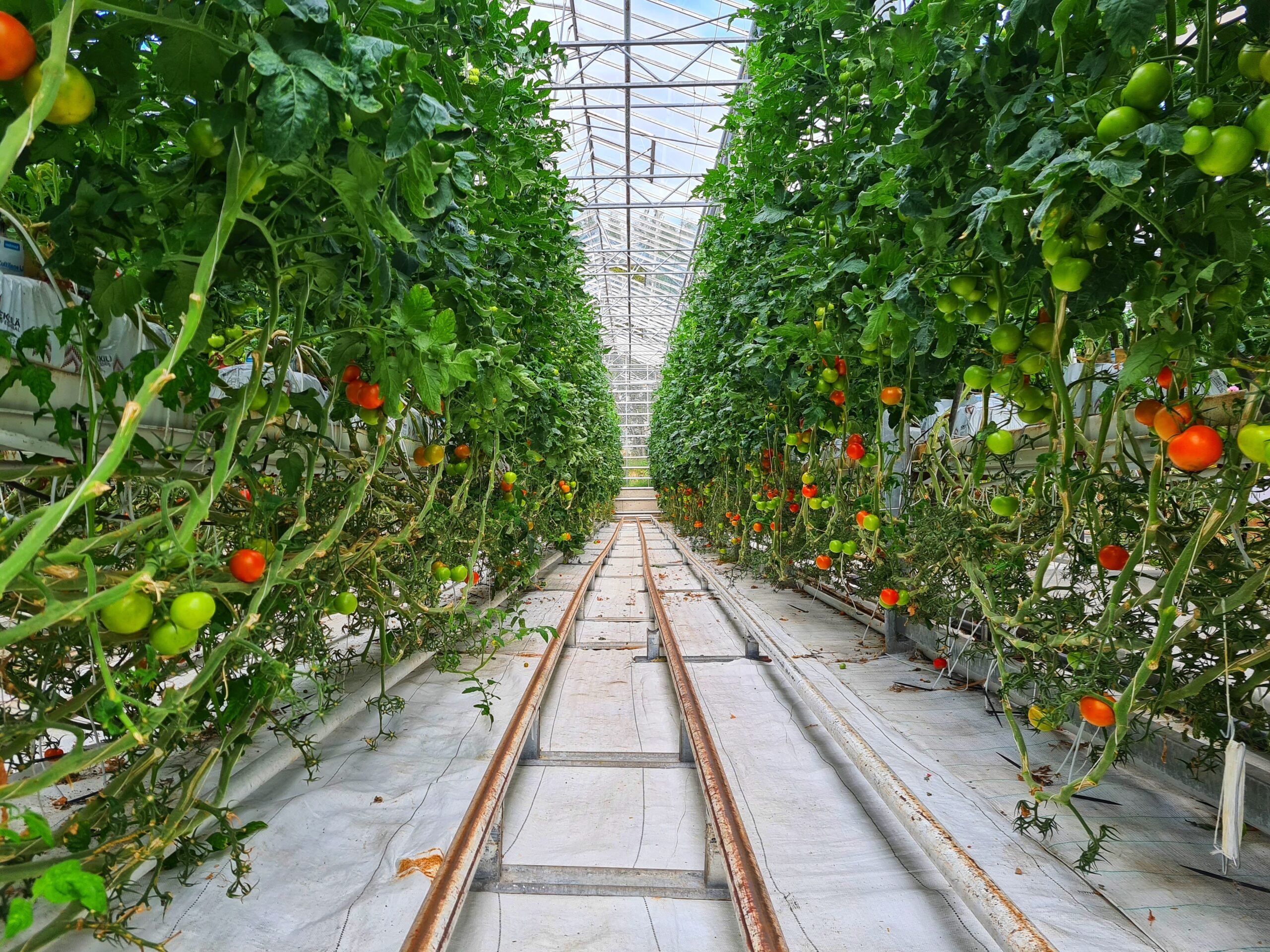
Growing crops in a controlled environment generally provides optimal conditions for crop production and minimizes the consequences of crop loss due to major weather changes, soil nutrient depletion, and pathogens or pests in the soil or air. A lot of research has been done on identifying and characterizing soil microorganisms. In contrast, there are few studies of hydroponic plant microbiomes. Whether controlled environment farming takes place in greenhouses, buildings, or repurposed cargo containers, our goal is to help growers reduce the chances of crop loss due to microbial pathogens by detecting and monitoring these pathogens in hydroponic systems thereby allowing growers to take appropriate action in a timely manner.
Healthy Hydroponics is the project that is allowing us to help growers.
Funding
In 2020, we received funding from the Canadian Agricultural Partnership, a five-year federal-provincial-territorial initiative aiming to grow and strengthen the agriculture and agri-food sector and advancing science and innovation on sustainable growth. Our two-year project focuses on detection and surveillance of the hydroponic plant microbiome including plant pathogens and food safety microbes in commercial hydroponic systems using DNA sequence-based monitoring. We also received funding from the National Research Council of Canada Industrial Research Assistance Program (NRC IRAP) to extend the project to cannabis. See our Project Overview for the specific goals of Healthy Hydroponics.
The Beginning
We kicked things off in September by giving a virtual presentation introducing Healthy Hydroponics through a session hosted by the Greenhouse Vegetable Specialist Fadi Al-Daoud and Greenhouse Vegetable IPM Specialist Cara McCreary, with the Ontario Ministry of Agriculture and Food and Rural Affairs (OMAFRA). We were thrilled with the great turn out and engagement from the audience wanting to learn more about the hydroponic plant microbiome.
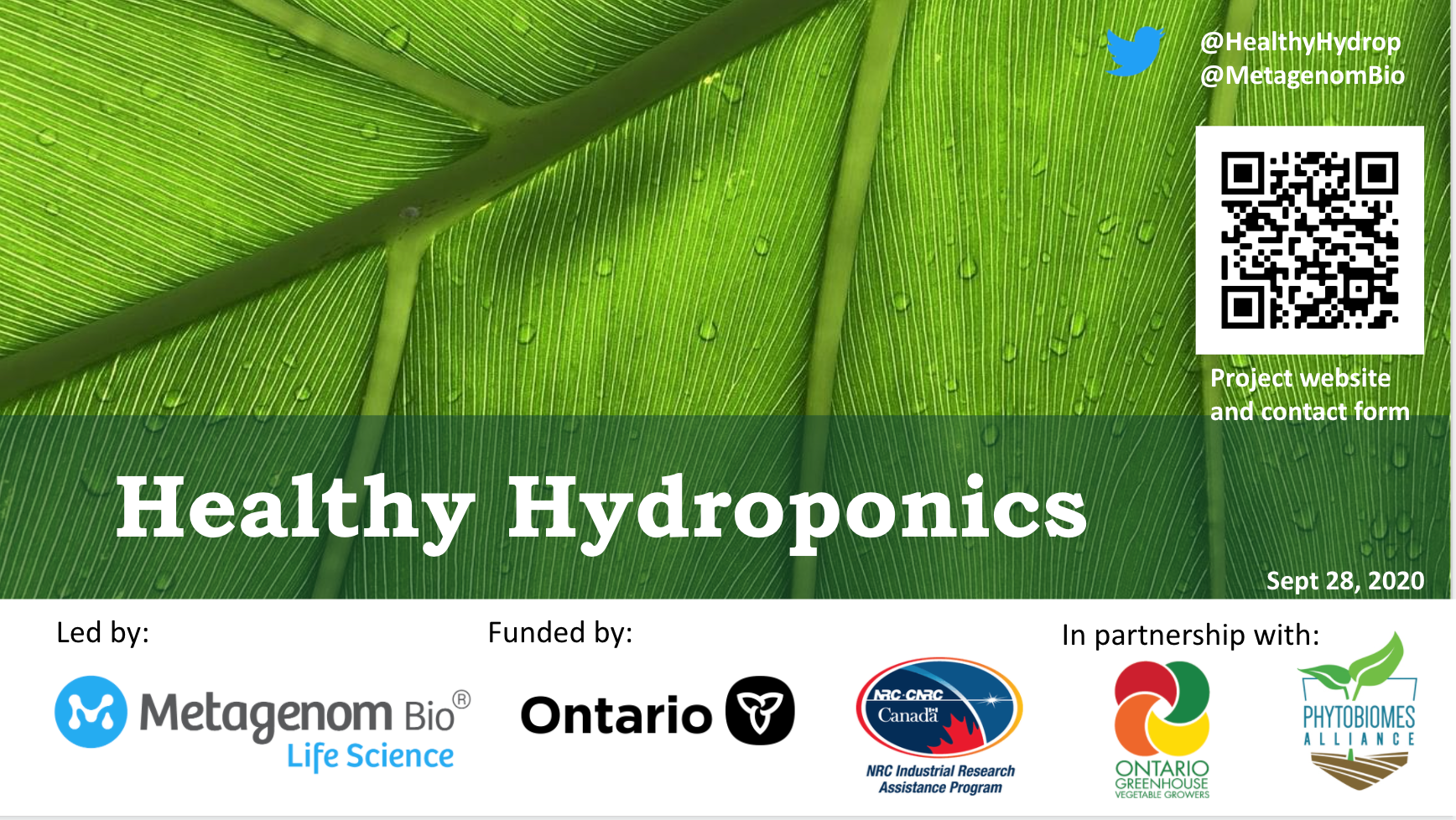
Recruiting Growers
After the presentation, we received emails from growers who were interested in participating in the project. We then conducted interviews with these growers to better understand their operations, their interests in this project, their crops, the types of technologies they are using, what kind of pathogens they have had to deal with, and what they hope we can help them with. It was a wonderful and stimulating experience talking to passionate and knowledgeable growers who were also excited and eager to learn more about the microbiomes in their hydroponic systems. From information gathered in these interviews, we proposed a sampling plan that was unique to each grower’s crop, each crop’s growth cycle, and previous pathogen history (if any). Taking into the feedback of growers, we adjusted their sampling plans accordingly.
Sampling Hydroponic Systems
Once we had the sampling plan finalized, we were able to compile sampling kits and sampling instructions to be sent to growers. Initially, we had wanted to visit nearby farms and collect samples ourselves but due to the pandemic, it was best to send out sampling kits for growers to collect samples and then send them back to us.
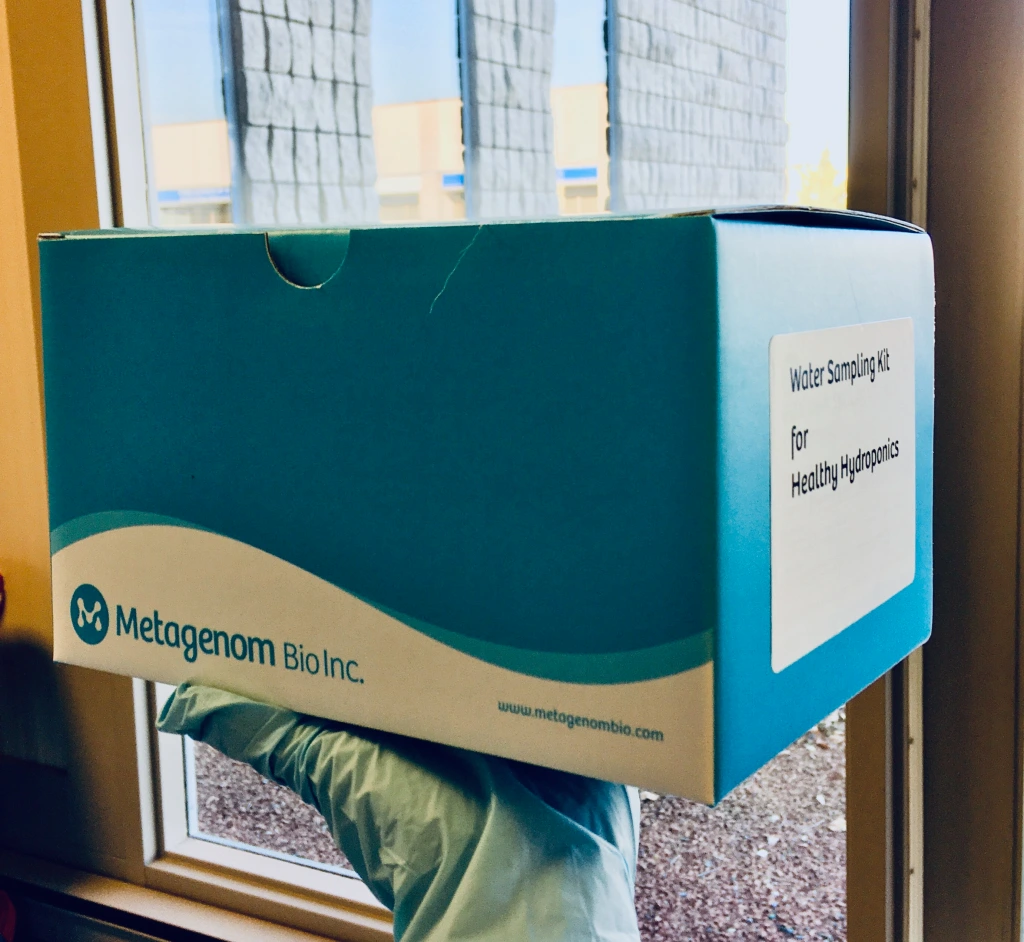
By the end of October, a couple of growers were able to start sampling using our kits. In general, samples are taken of nutrient solution feeding the plants, nutrient solution leached from the substrate that gets recirculated or discarded (leachate), and root samples. This helps us to identify the hydroponic microbiome and the root microbiome (rhizosphere or rhizoplane) of crops over a growth cycle or part of a growth cycle.
This was new and exciting for us and growers as well. I’ve especially appreciated our growers’ pragmatism, patience, and frankness as we work together through the sampling process and the project logistics, all the while living through a pandemic.
Processing and Sequencing Samples
Once we receive samples, we extract their DNA, prepare them for sequencing which can be a lengthy process stretched over several days when we are processing samples in bulk. The actual sequencing takes about a day.
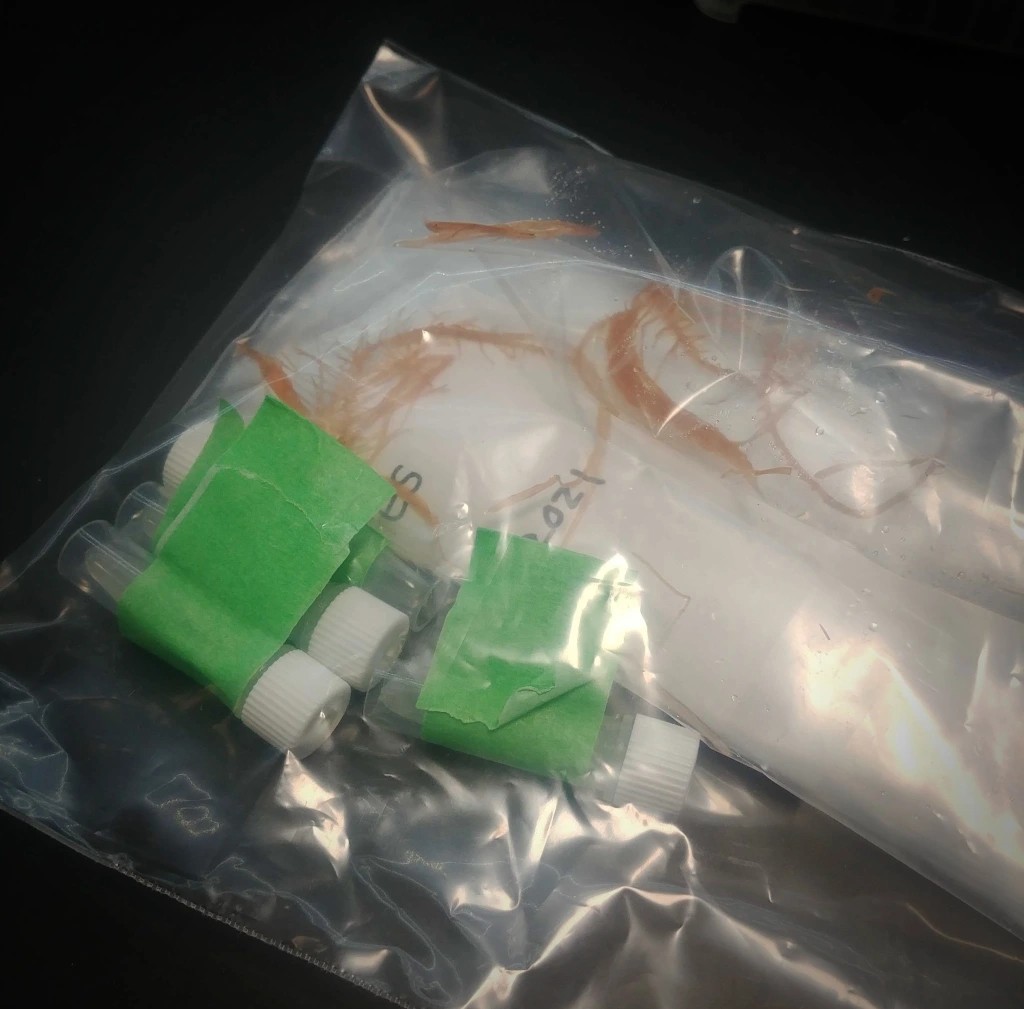
We sequence particular marker genes which can be thought of as barcodes that identify microorganisms generally at the genus level. These marker genes are 1) 16S rRNA gene which identifies bacteria and archaea, 2) 18S rRNA gene and 3) the internal transcribed spacer (ITS) which identifies fungi. Then, our bioinformatician processes the sequencing data and converts that to graphs which are included in clear, concise reports for our growers.
Target Results of Healthy Hydroponics
In general, from the sequencing results, we want to answer the following questions about the hydroponic microbiome:
- What kinds of bacteria, archaea, and fungi are in the nutrient solution, leachate, and on the root samples
- What’s the abundance of these types of microorganisms and how does it change over time?
- What’s the abundance of (low and high priority or commonly occurring) plant pathogens and how does the abundance change over time?
- How healthy is the hydroponic system based on the types and abundance of plant pathogens detected?
- How do the environmental parameters change when plant pathogens’ abundance changes?
Once we have provided a report for growers, we set up a meeting to go over the information we’ve gathered. answer any questions, and gather feedback. We want to ensure that the results that growers receive are useful and understandable. From these results, growers can share the findings with their crop advisor or a plant pathologist to decide upon the best course of action to address the concerns.
Project in Numbers So Far
We are happy to present the project’s current numbers:
- 12 Companies on board (includes both vegetables/fruits and cannabis)
- Companies located across 4 provinces (Ontario, British Columbia, Alberta, and Quebec)
- Sampling 3 types of controlled-environment agricultural (CEA) systems: greenhouse, building, container
- Sampling 6 types of CEA technologies:
- Drip, deep water culture (DWC), ebb and flow, nutrient film technology (NFT), bottom-up watering, aeroponic
- Sampling 6 types of crops (13 varieties)
- Tomato, lettuce, kale, arugula, strawberry, cucumber, cannabis)
- Completed sampling of 5 operations
- Received 151 samples as of January 31, 2021
Learning From Growers
From talking to growers while conducting interviews, I personally got a better understanding of their craft even though I’ve just scratched the surface of controlled-environment agriculture in Canada. We are becoming aware of the plant pathogens that have come and gone or those that continue to persist in their systems and have been wreaking havoc.
Plant Pathogen Viruses
We are also working towards solutions for problems we currently are not monitoring. For example, having talked to particular growers, we learned that the Tomato brown rugose fruit virus (ToBRFV) has been severely affecting tomato crops causing catastrophic loss.
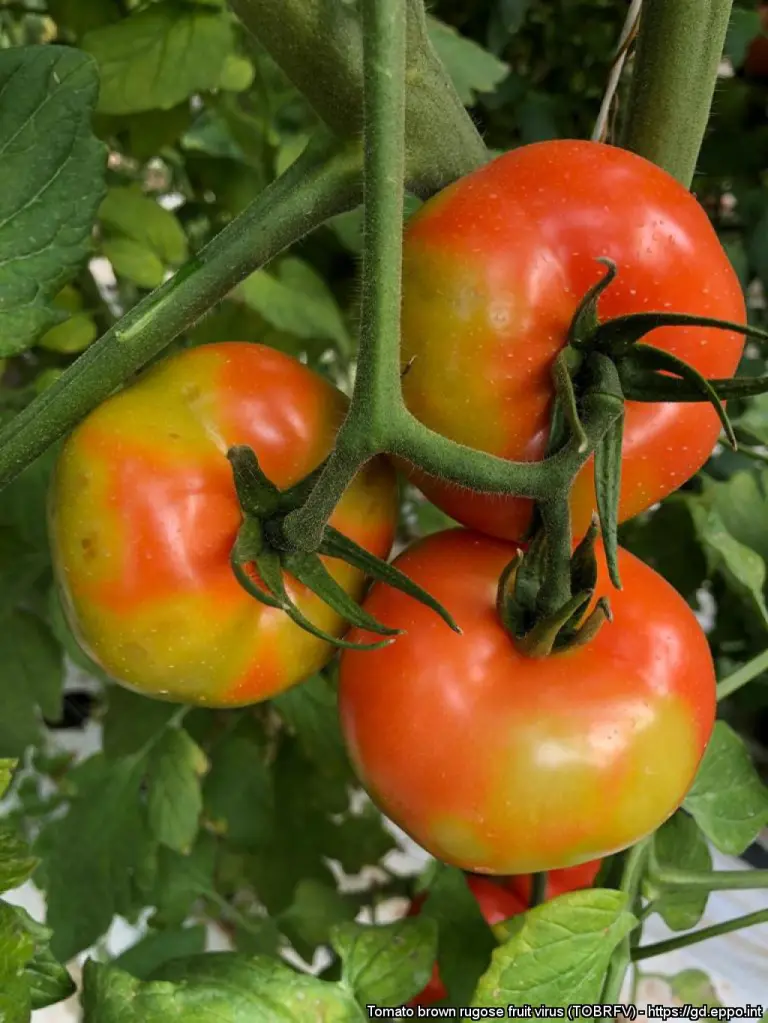
Currently, the scope of Healthy Hydroponics does not include detection and monitoring of viruses but we’ve already started researching more about the ToBRFV and related viruses, and have taken steps to target their detection using sequencing technologies.
What’s Happening Now
We are still receiving samples from growers to process while staying in contact with growers who have finished sampling.
We are also finishing up building the process for report generation. This will generally be a work in progress. As we receive feedback and think of ways to improve the way data can be visualized, we will make tweaks to the report accordingly. We have been really excited to send out the first report to growers and are finally able to send the first set to growers this week!
We are still looking for a couple more vegetable growers, especially those that grow hydroponic peppers and cannabis. If you know of growers who may be interested in participating in our project, please have them reach out to us at [email protected].


